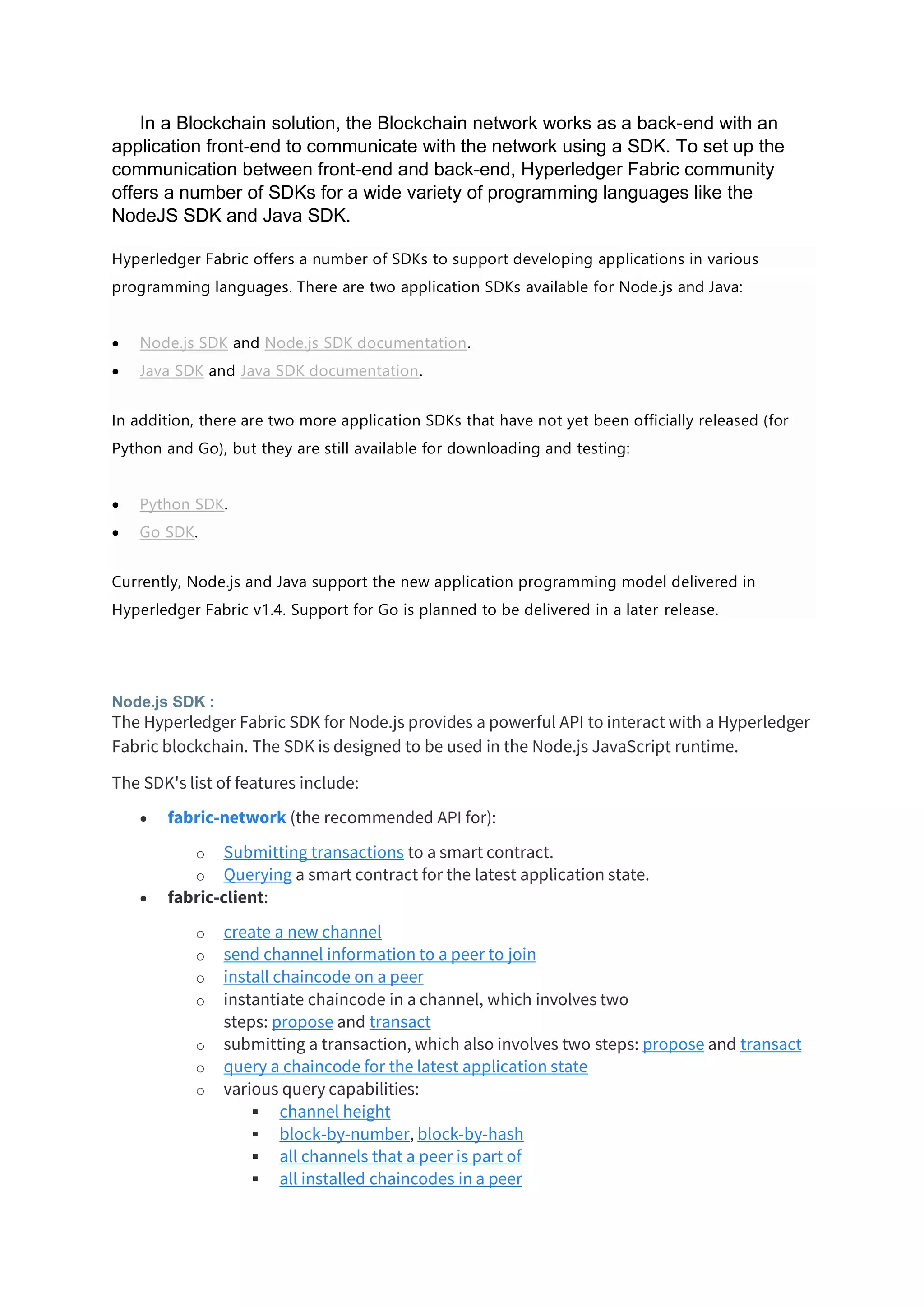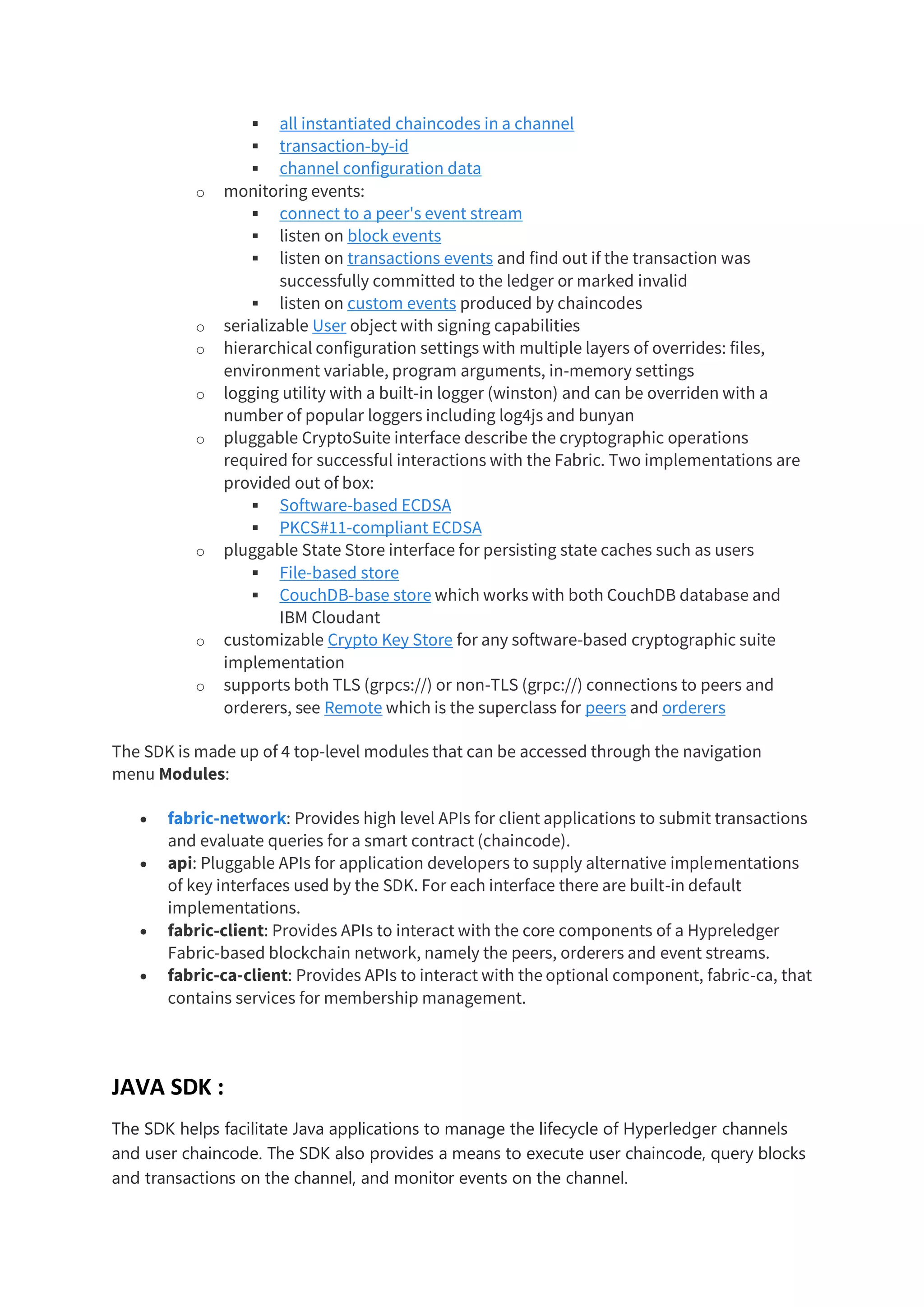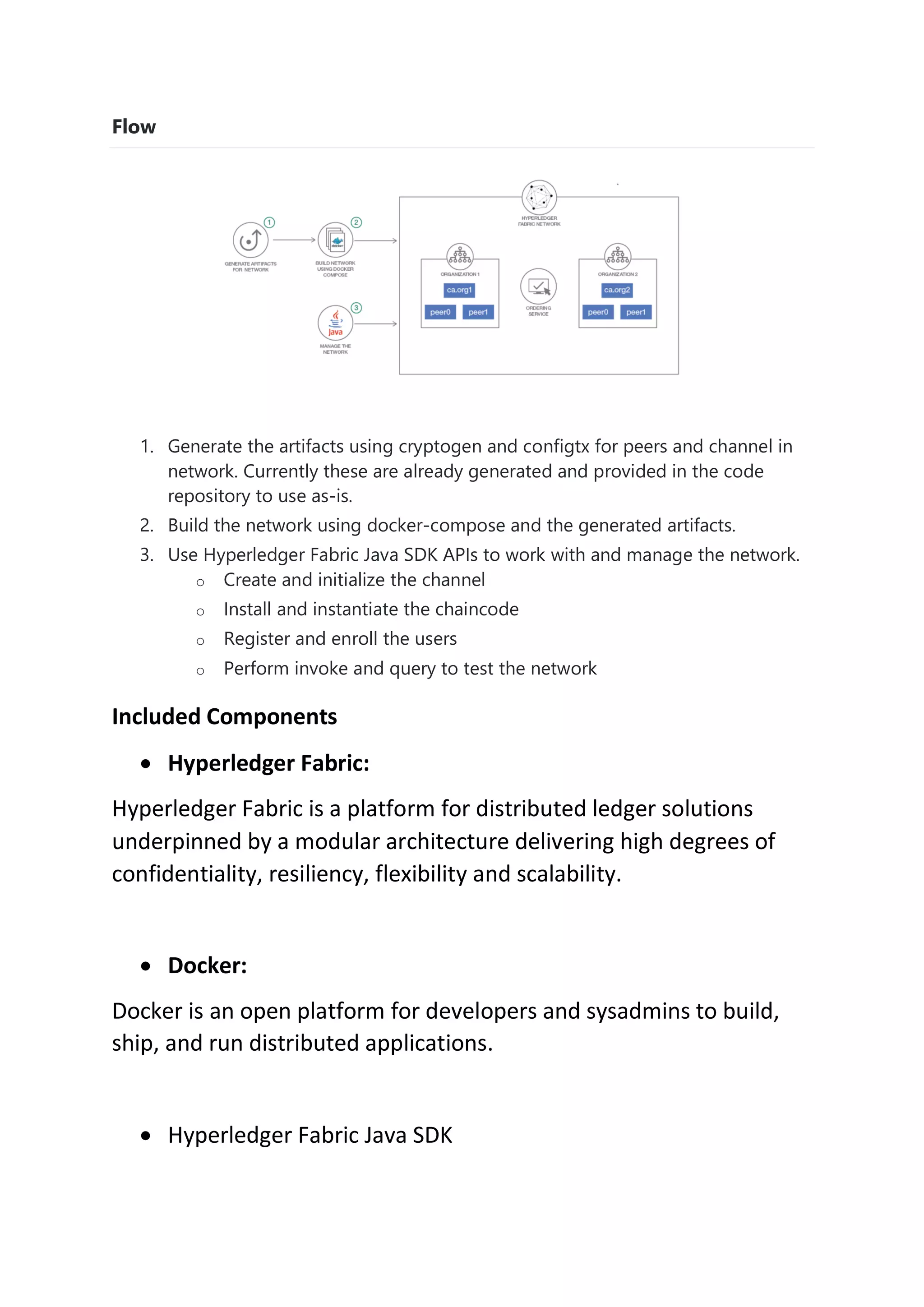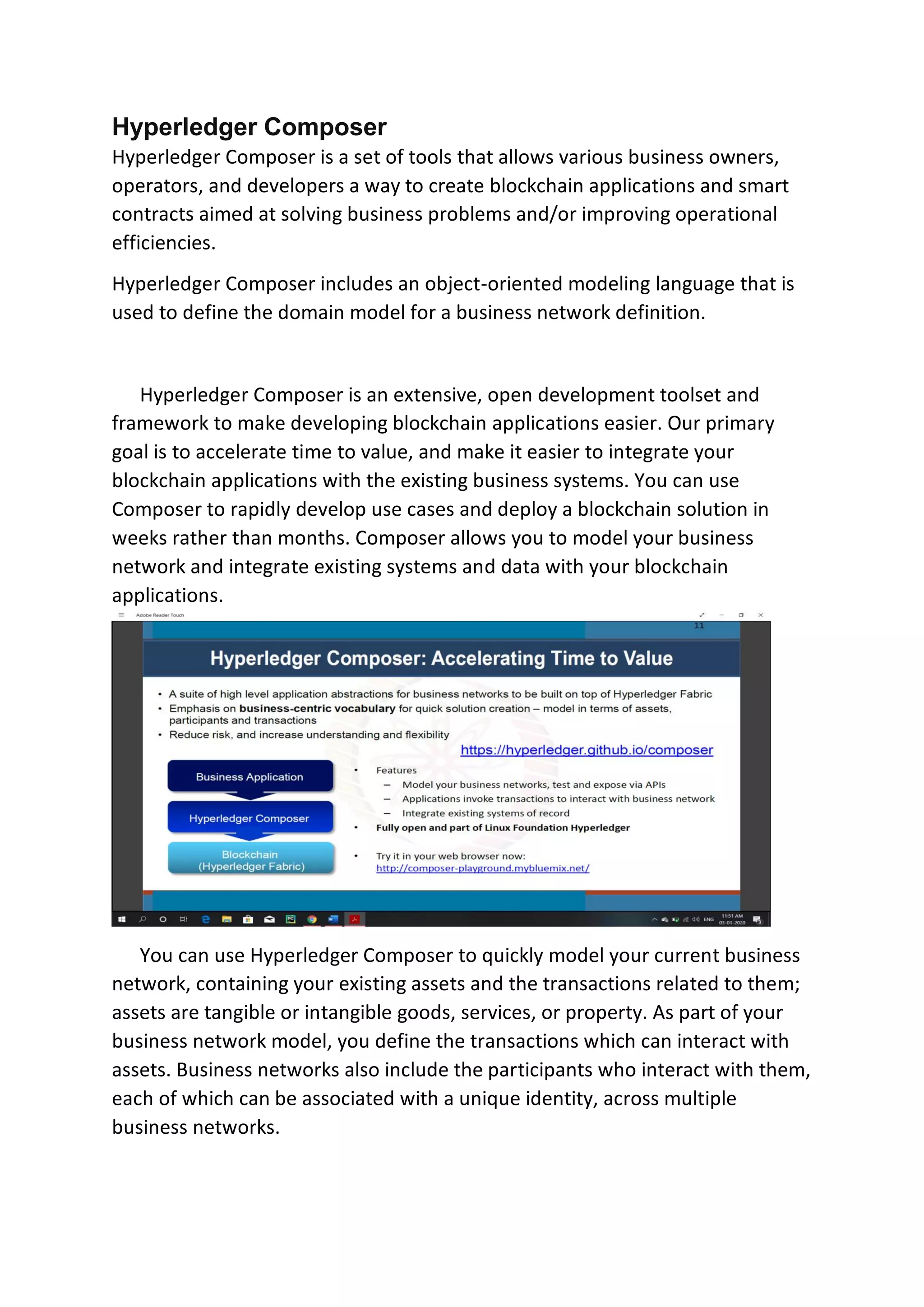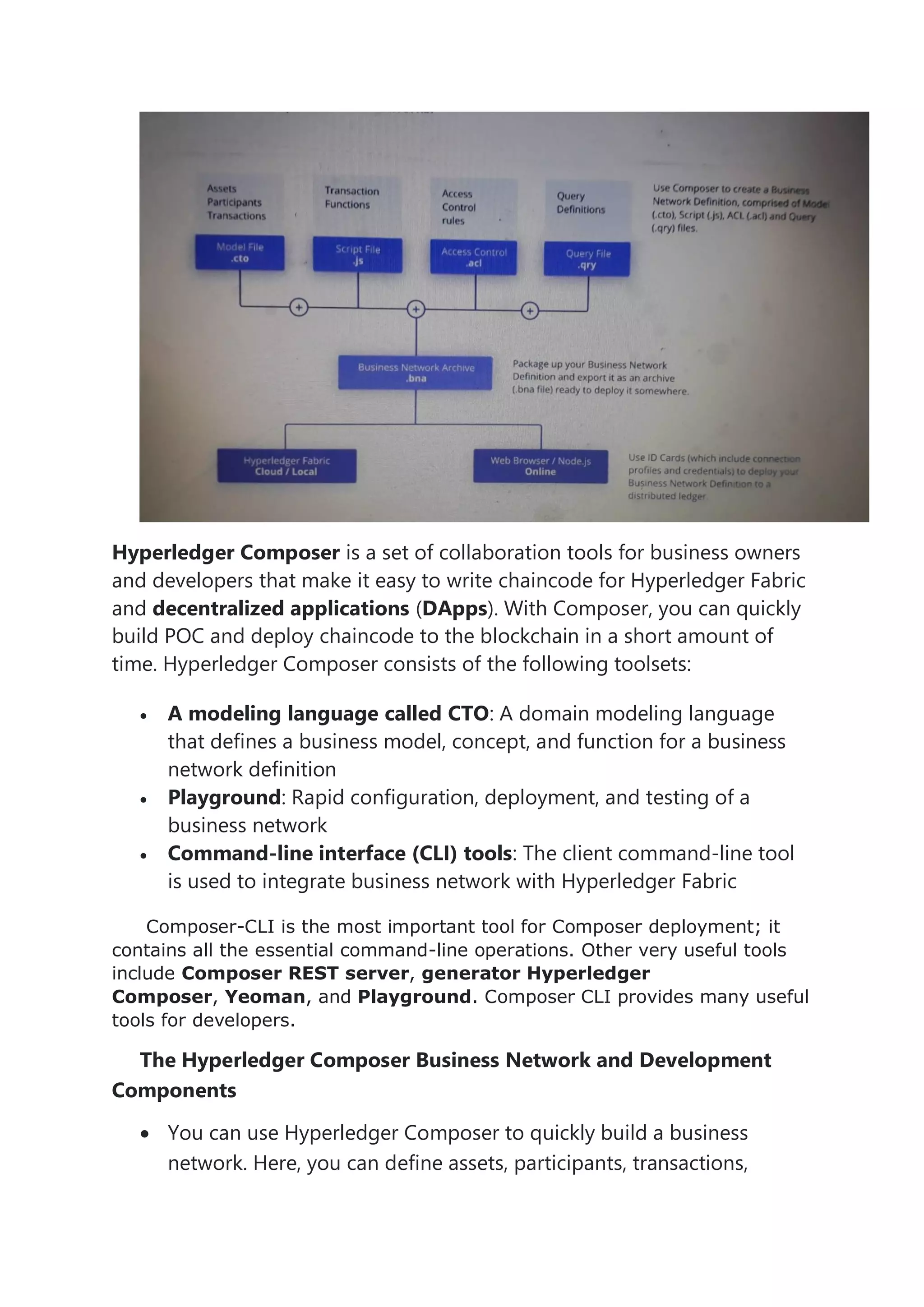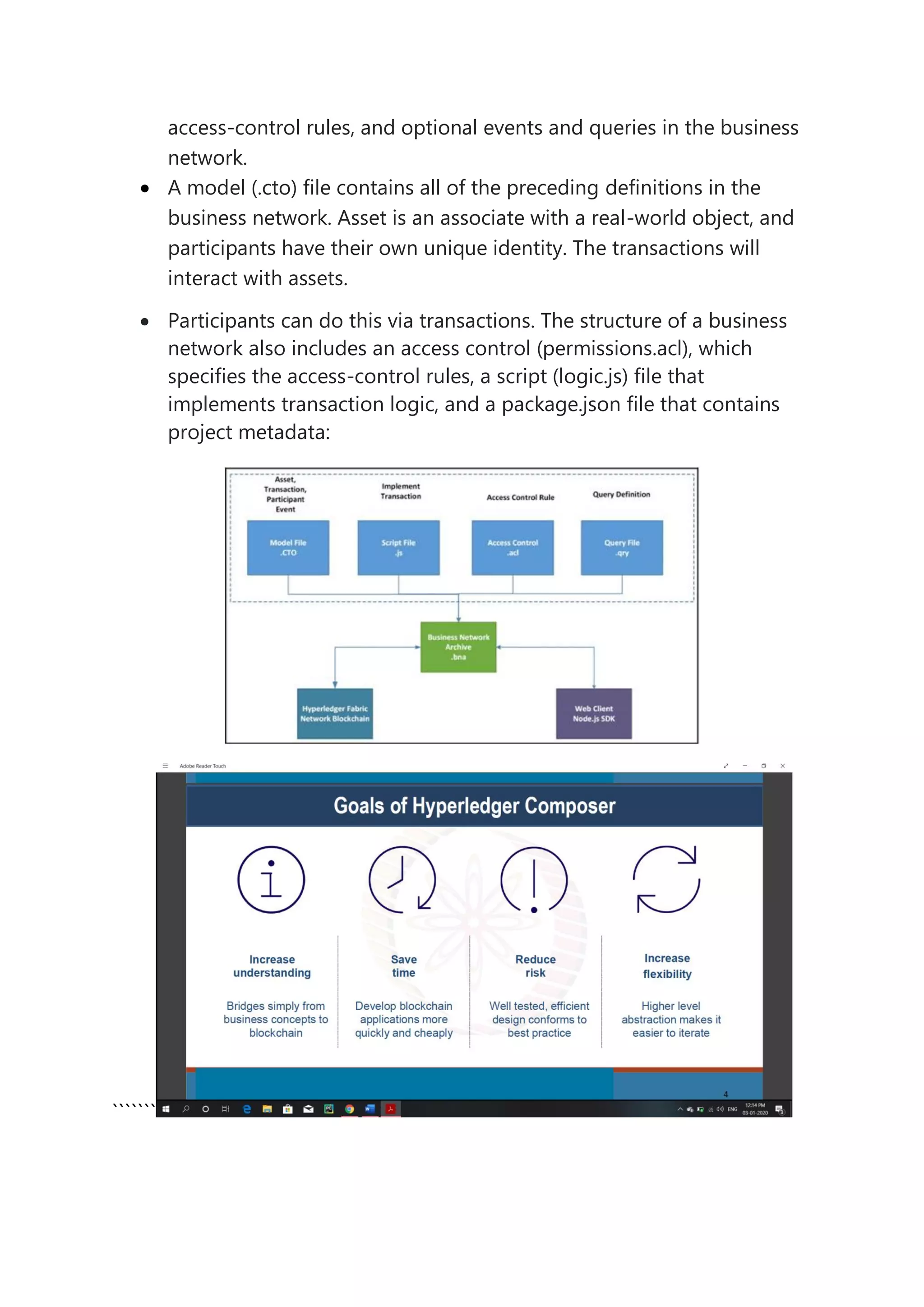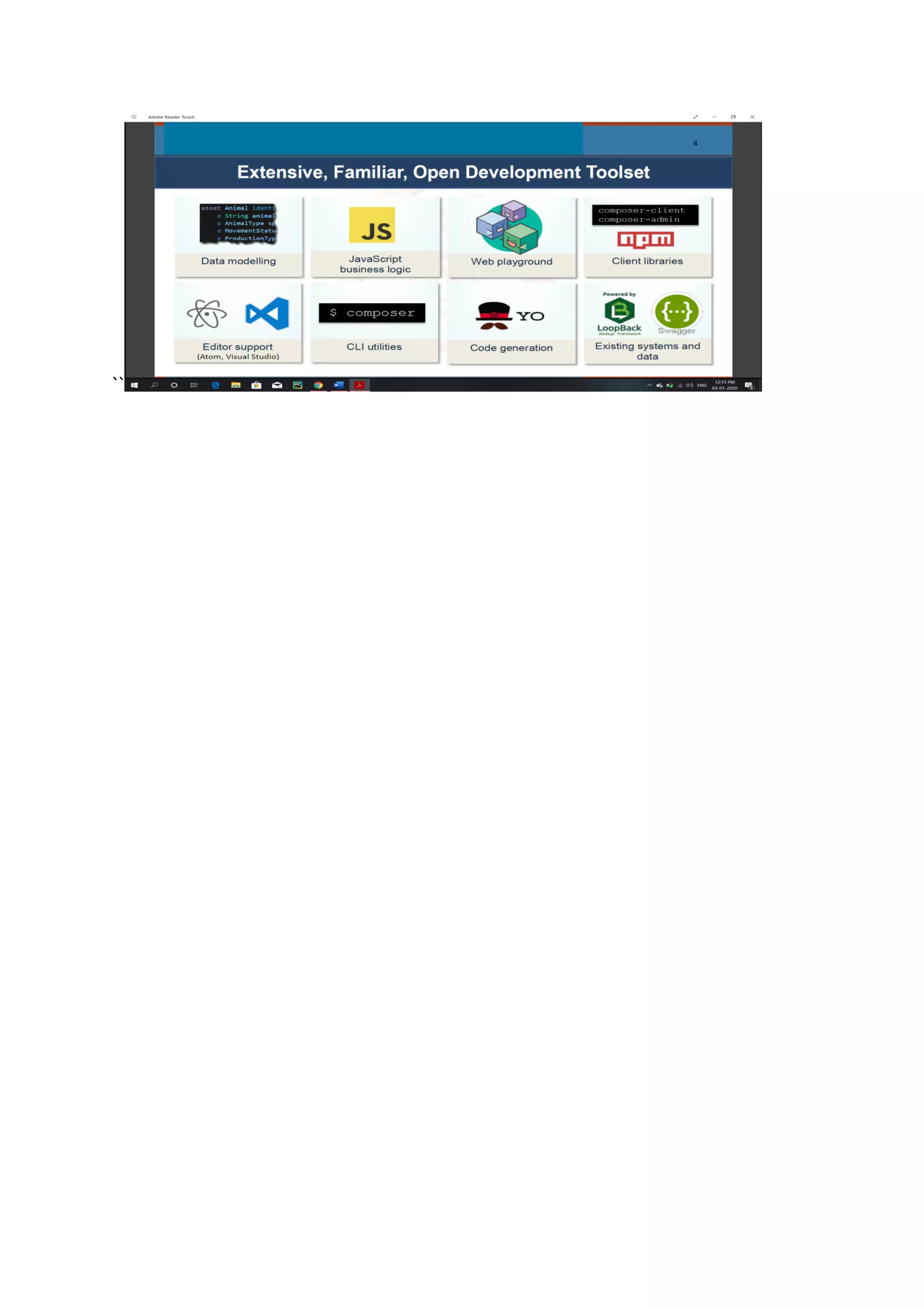Hyperledger is an open source blockchain project started in 2015 by the Linux Foundation. It includes various blockchain frameworks and tools to support collaborative development of blockchain distributed ledgers. Hyperledger Fabric is a modular and permissioned blockchain framework that provides applications and solutions for enterprises. As an open source project, anyone can contribute to Hyperledger Fabric, which currently has 35 organizations working together to develop it. Key components of Hyperledger Fabric include membership services, certificate authorities, nodes, peers, and chaincode to handle business logic on the network.
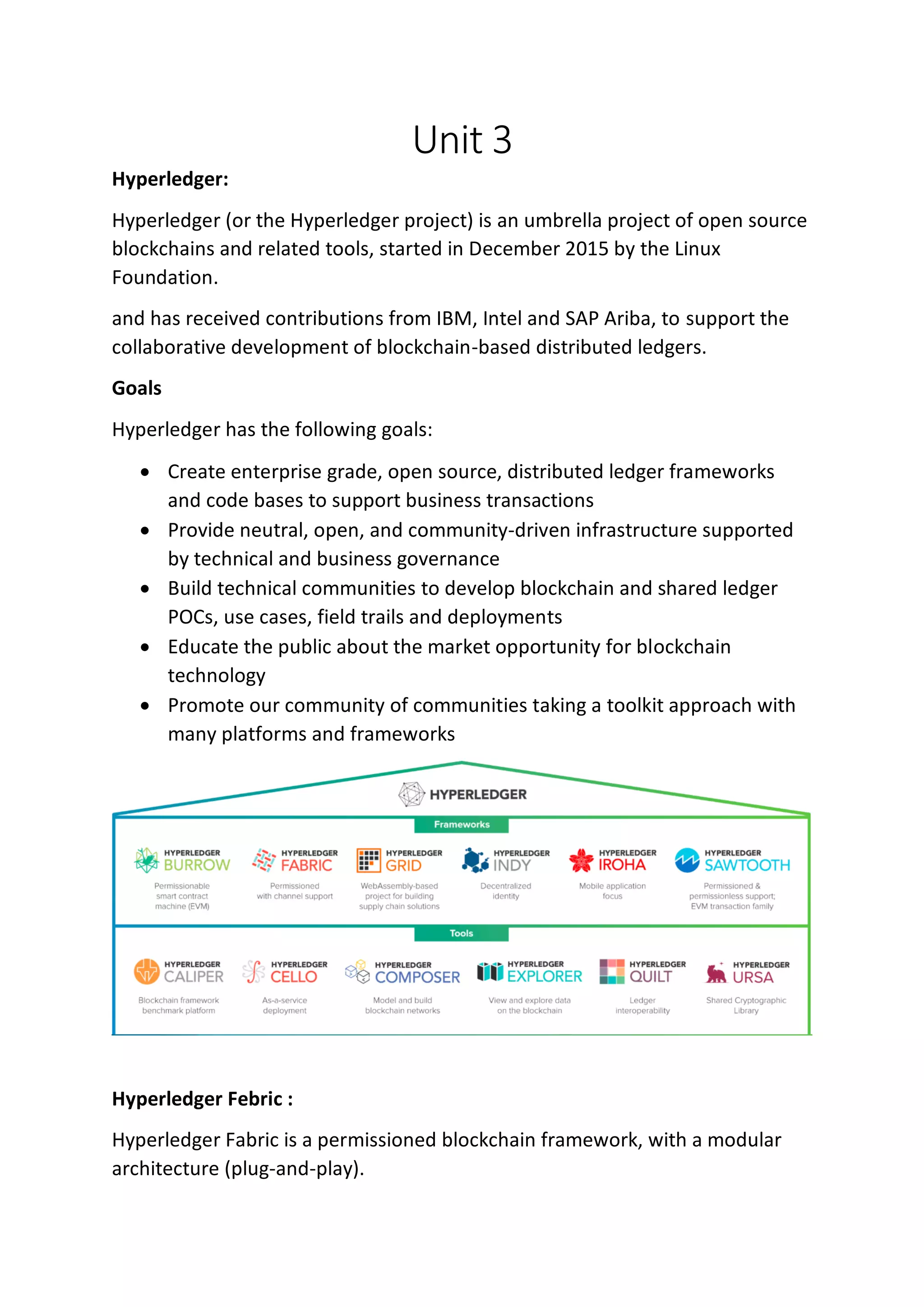
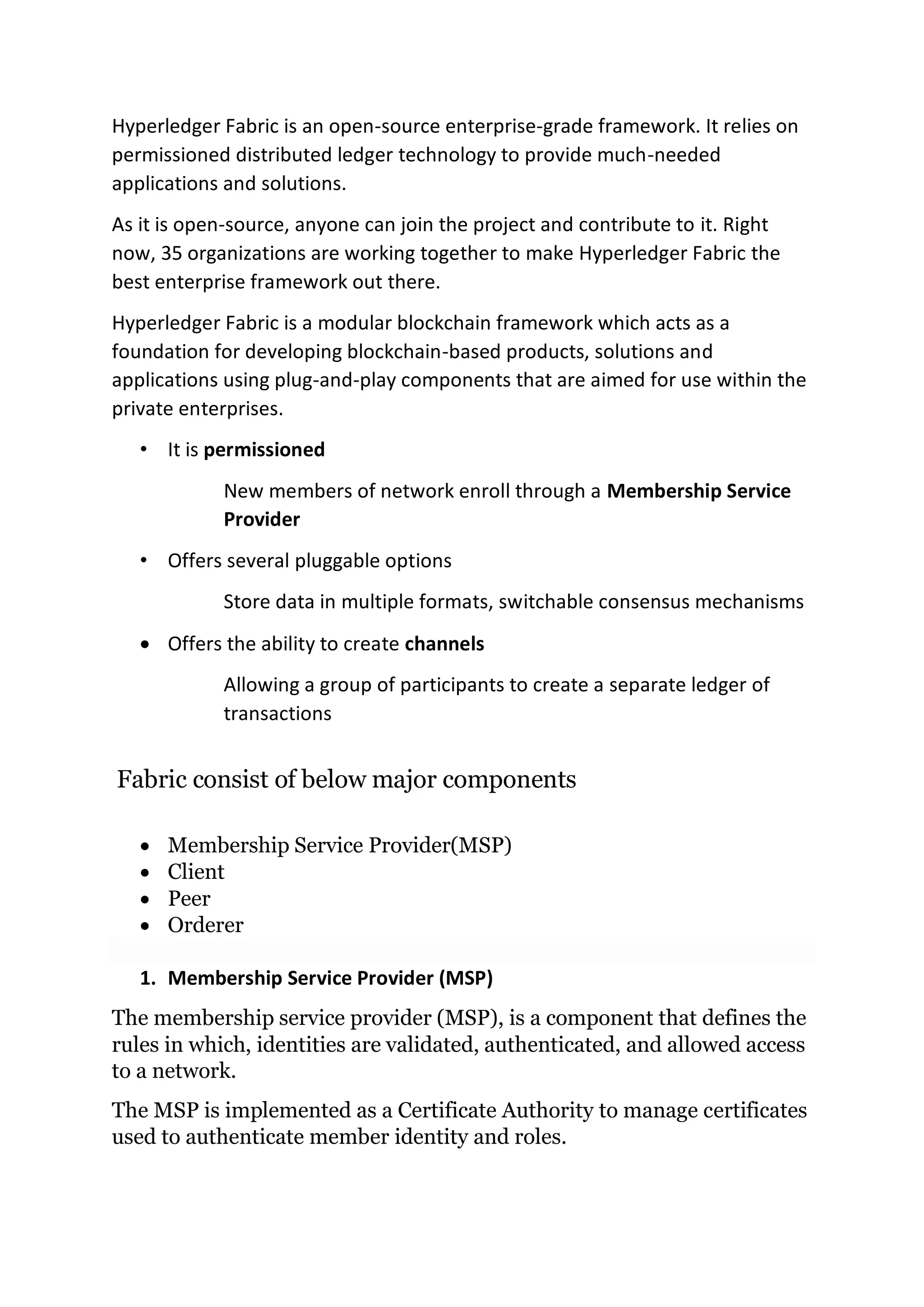
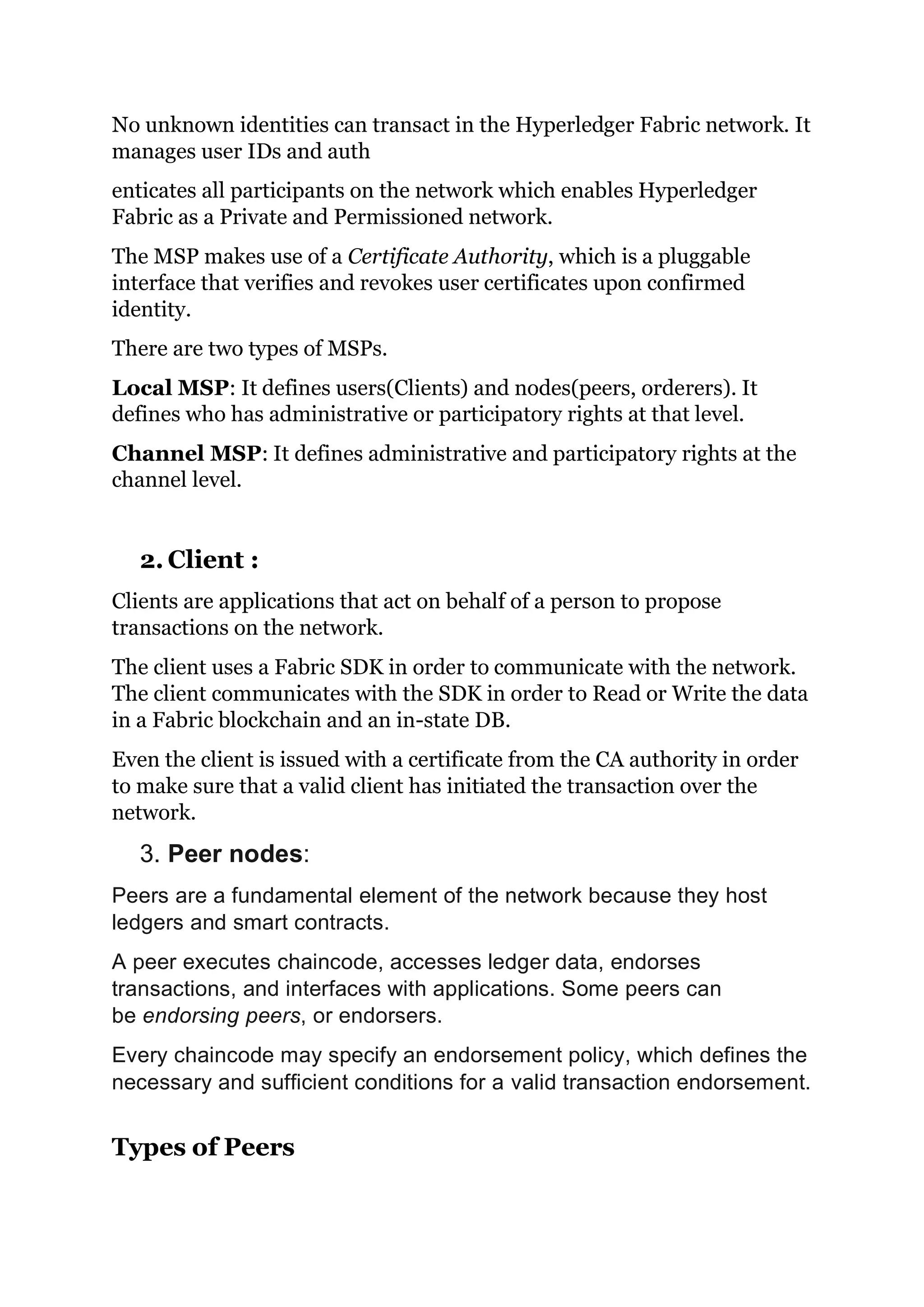
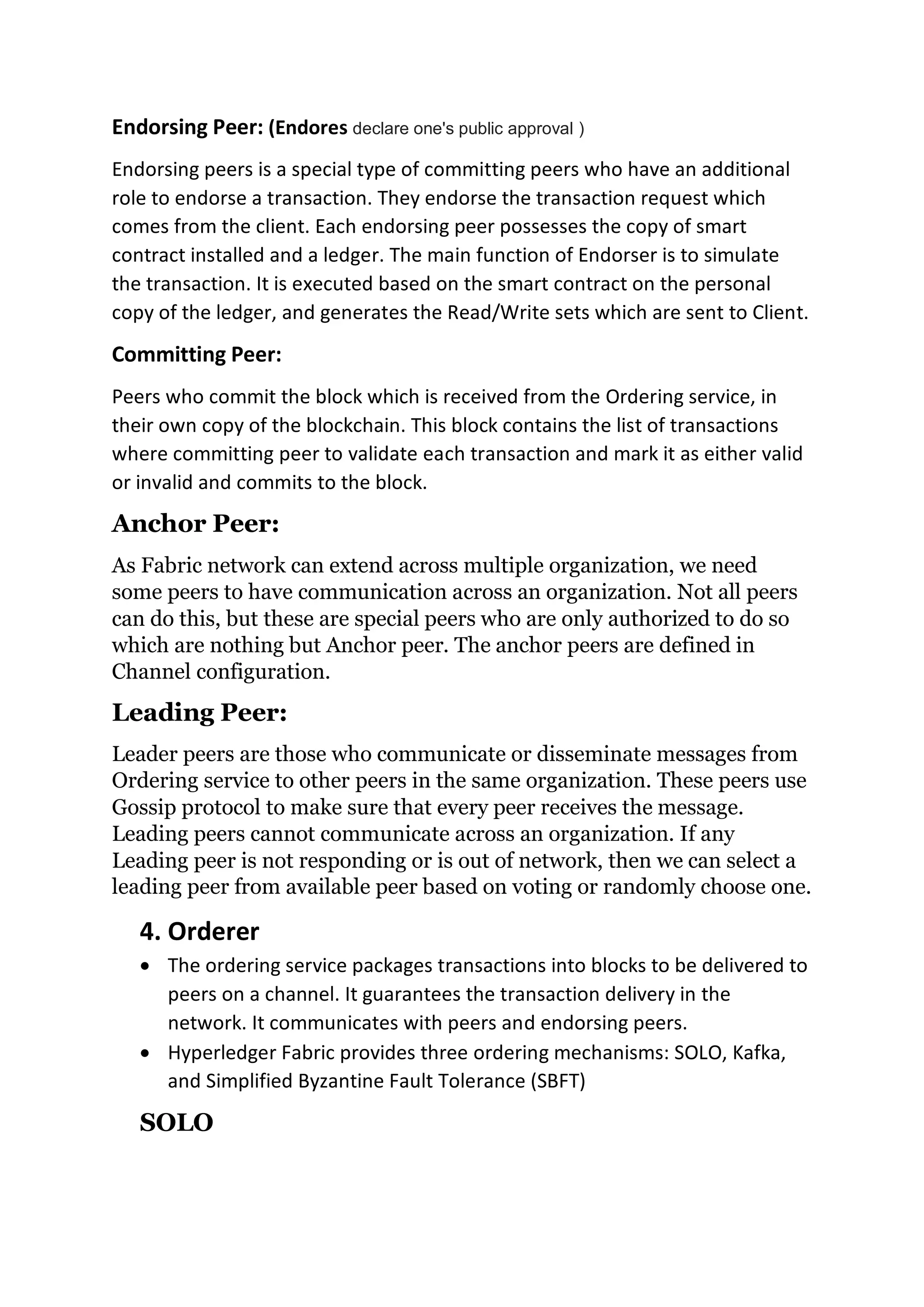
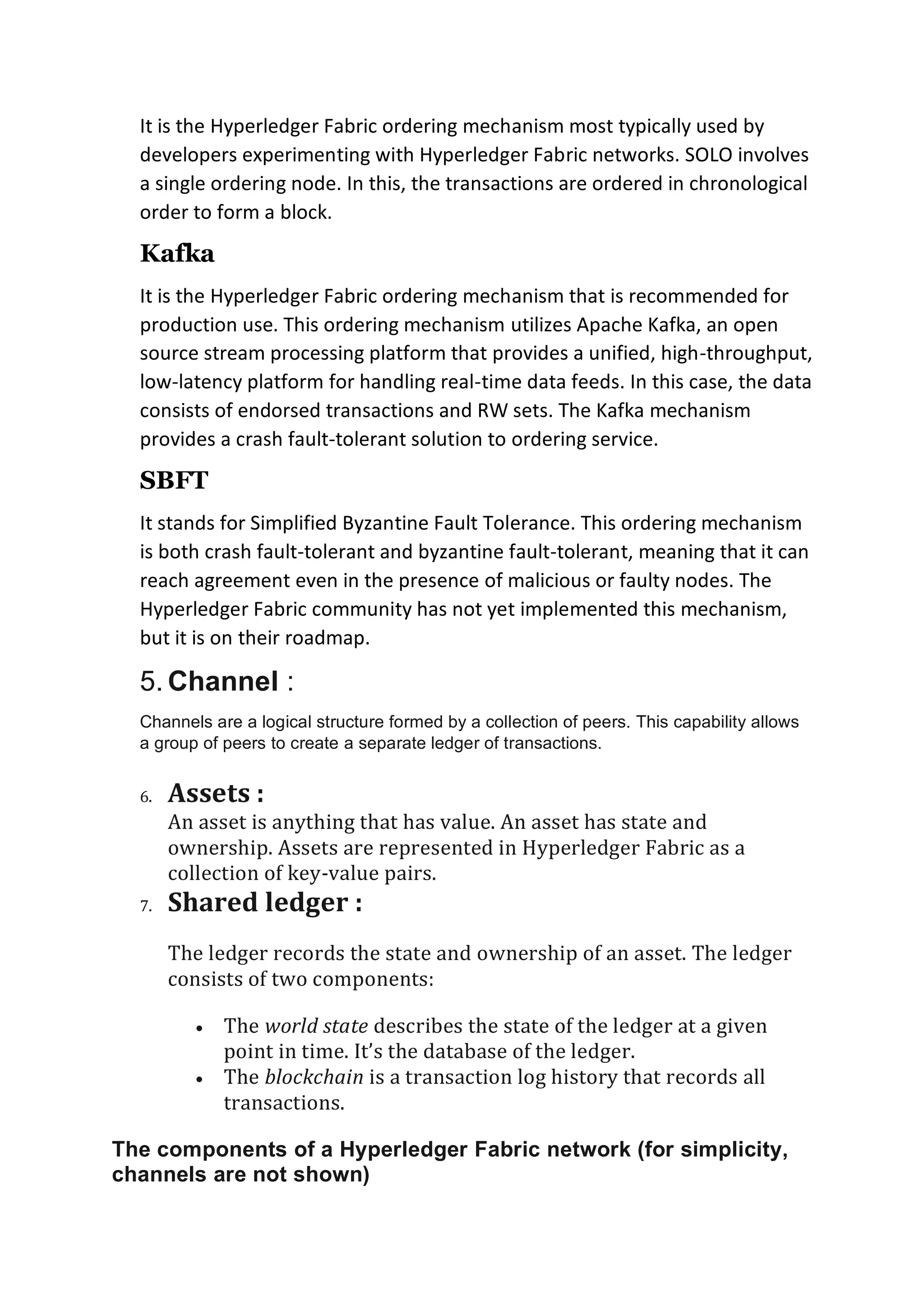
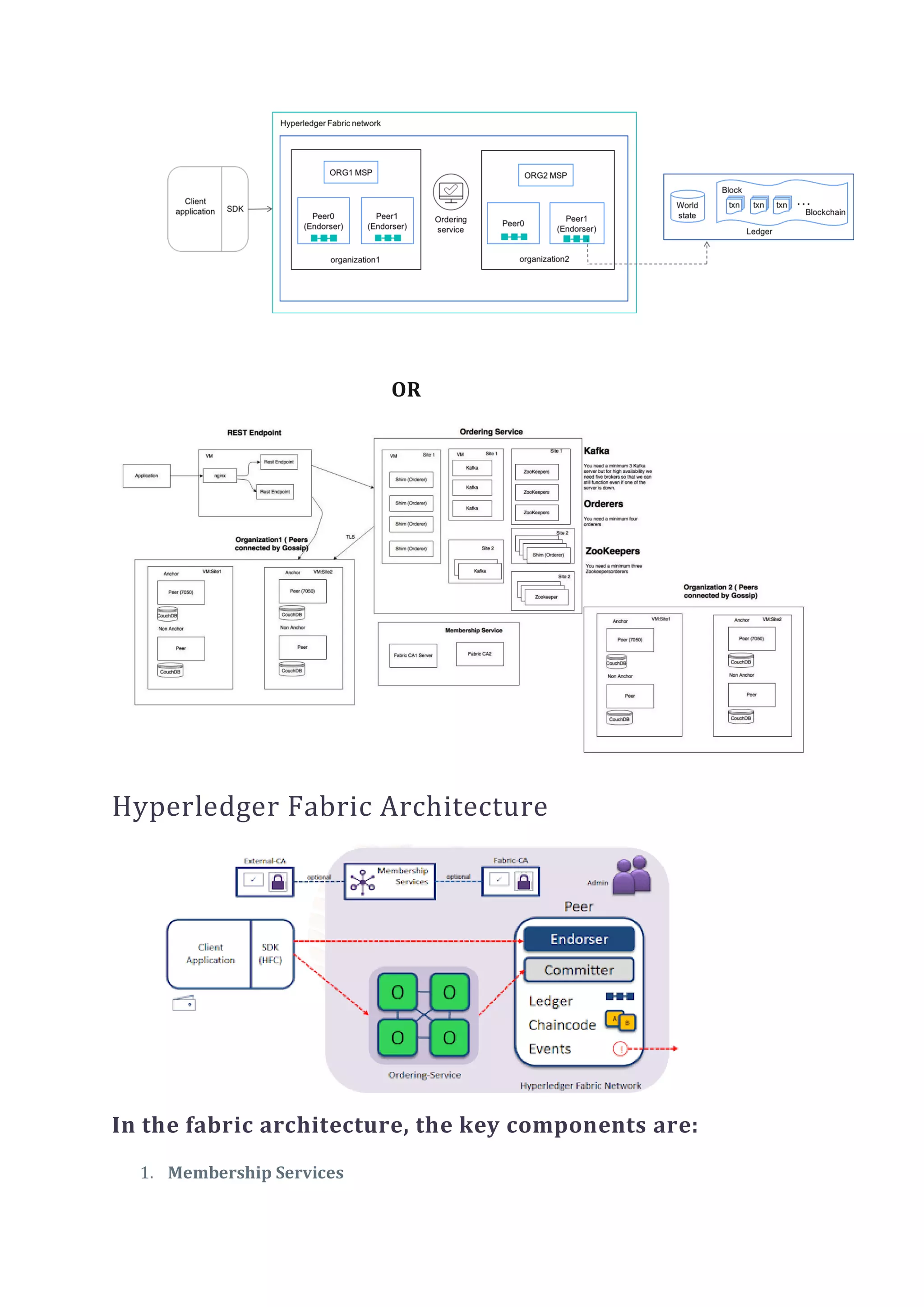
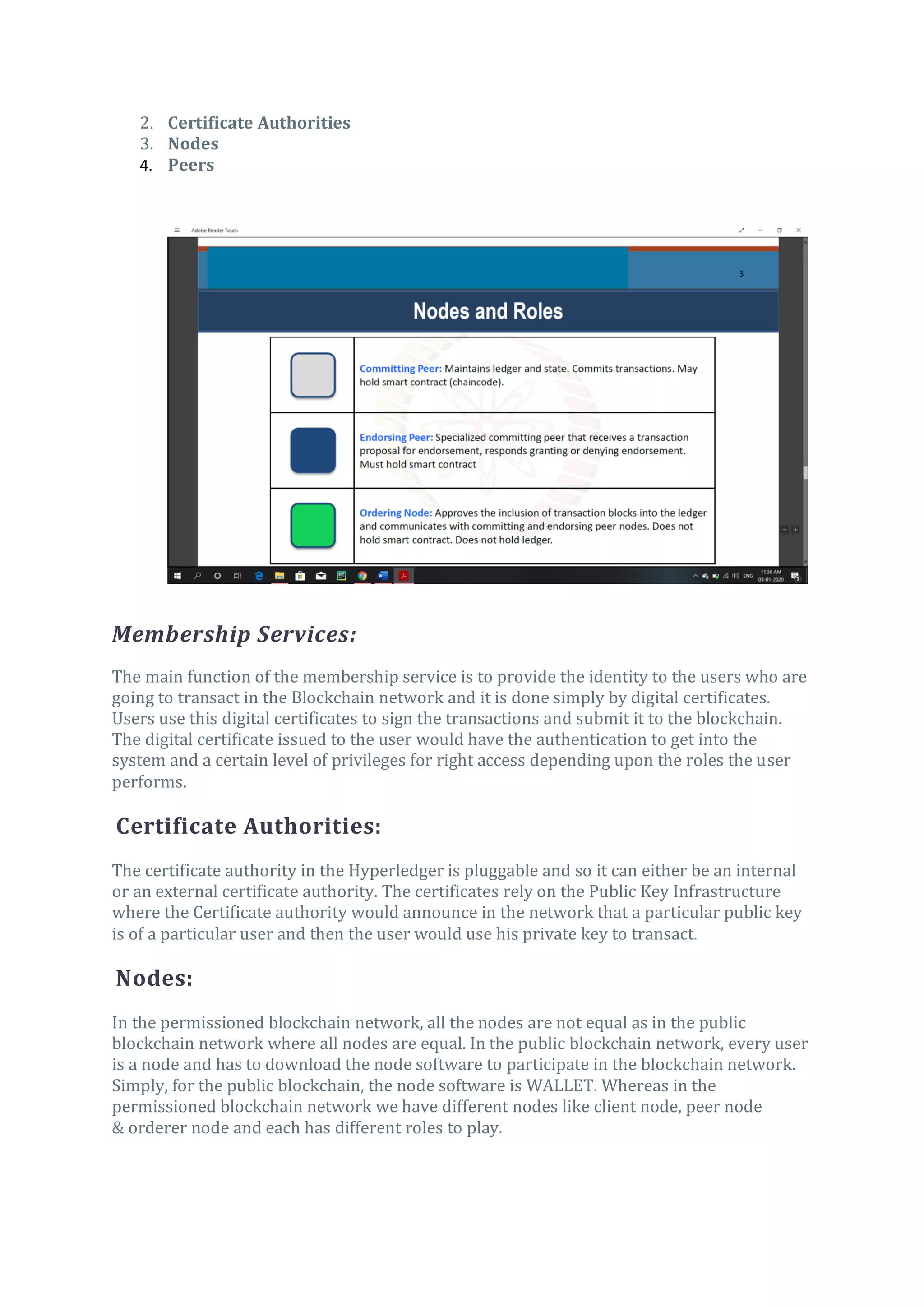
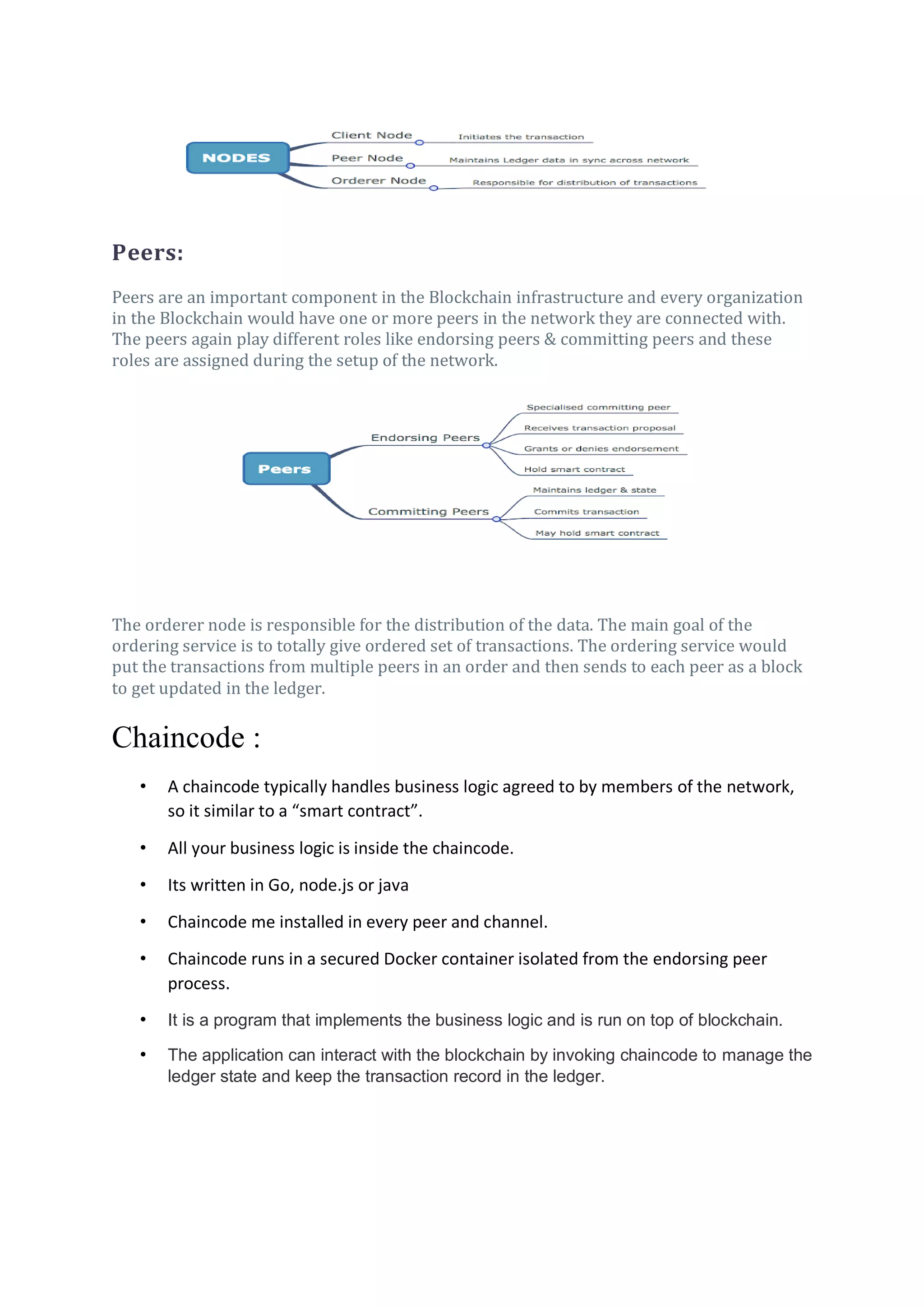
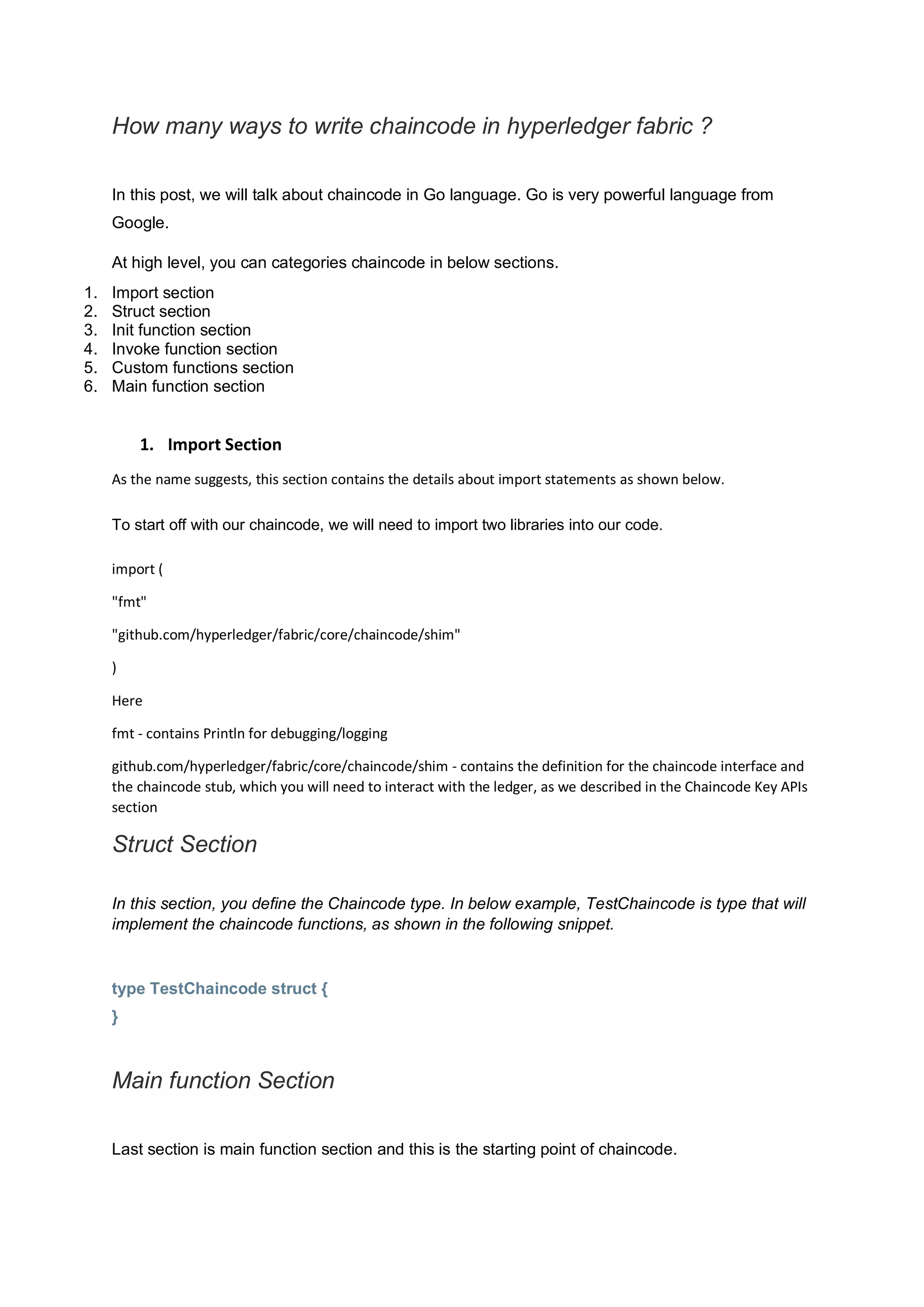
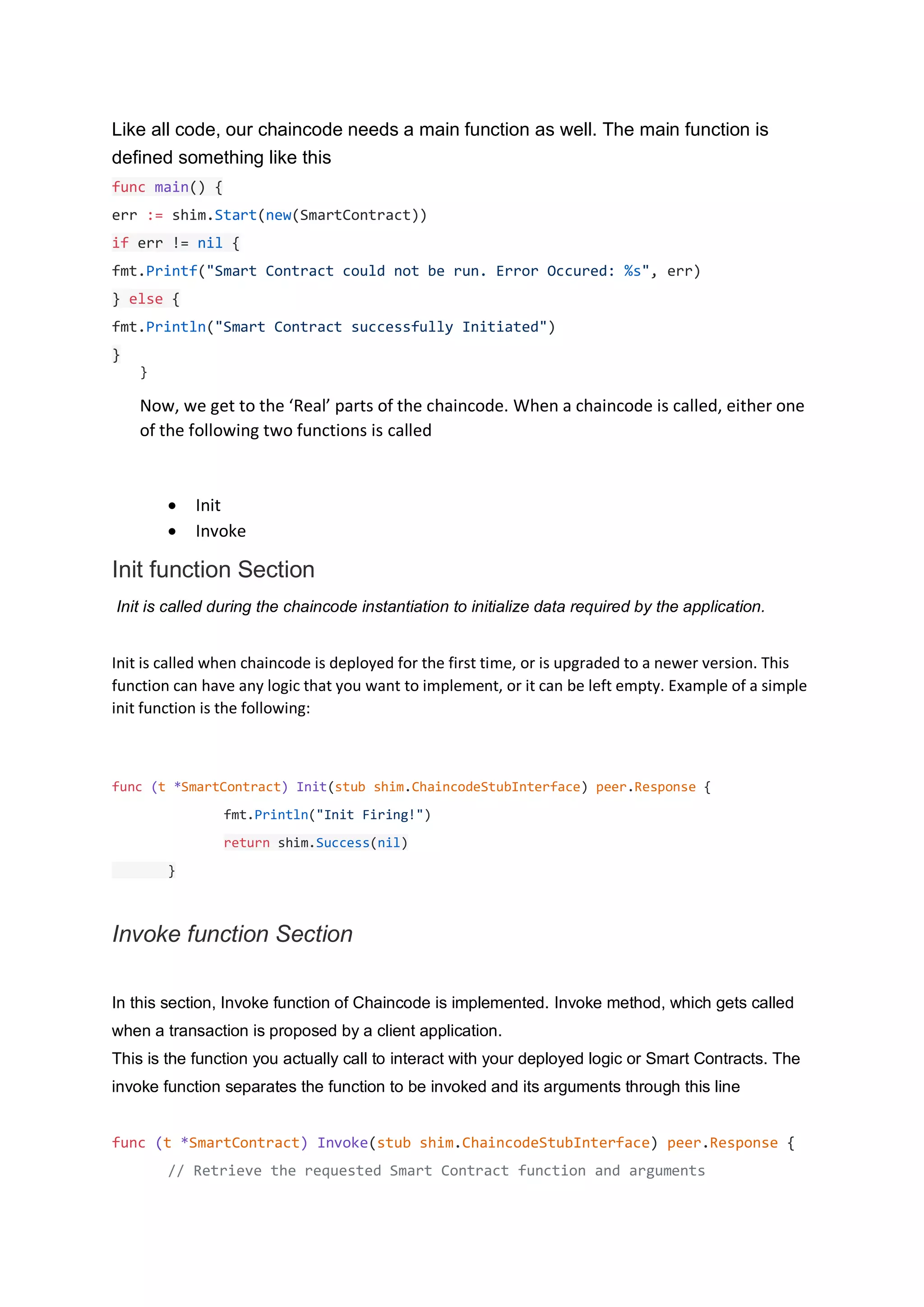
![function, args := stub.GetFunctionAndParameters()
fmt.Println("Chaincode Invoke Is Running " + function)
if function == "addAsset" { //Add new Asset
return t.addAsset(stub, args)
}
if function == "deleteAsset" { //Delete an Asset
return t.deleteAsset(stub, args)
}
if function == "queryAsset" { //Query for Asset
return t.queryAsset(stub, args)
}
fmt.Println("Invoke did not find specified function " + function)
return shim.Error("Recieved unknown")
}
As shown above, GetFunctionAndParameters function from shim package helps to get the
function name and arguments to that function. In this example, SDK can either call setValue()
function or getValue() function with required arguments.
function name is getting saved in fn and arguments in args. Later you can check the function
name and based upon that invoke custom functions such as setValue or getValue.
Custom function Section
As shown above, Invoke function can further call custom defined functions. These custom
functions can be defined as per the requirement.
Below is definition of setValue() function, that set the key and value.
func setValue(stub shim.ChaincodeStubInterface, args []string) (string, error) {
if len(args) != 2 {
return "", fmt.Errorf("Incorrect arguments. Expecting a key and a value")
}
err := stub.PutState(args[0], []byte(args[1]))
if err != nil {
return "", fmt.Errorf("Failed to set values: %s", args[0])
}
return args[1], nil
}](https://image.slidesharecdn.com/unit3-200106141630/75/blockchain-unit-3-11-2048.jpg)
![The setValue method will modify the world state to include the key/value pair specified. If the key
exists, it will override the value with the new one, using the PutState method; otherwise, a new
asset will be created with the specified value.
Below is definition of getValue() function, that provide the value based upon key.
func getValue(stub shim.ChaincodeStubInterface, args []string) (string, error) {
if len(args) != 1 {
return "", fmt.Errorf("Incorrect arguments. Expecting a key")
}
value, err := stub.GetState(args[0])
if err != nil {
return "", fmt.Errorf("Failed to get value: %s with error: %s", args[0], err)
}
if value == nil {
return "", fmt.Errorf("Value not found: %s", args[0])
}
return string(value), nil
}
The getValue method will attempt to retrieve the value for the specified key. If key is not
passed in the arguments then error is returned and if key is there then GetState function is
called and that in turn query the state database and get the value for that key.
Fabric SDK :
Blockchain is a shared, immutable ledger for recording the history of transactions.
The Linux Foundation’s Hyperledger Fabric, the software implementation of
blockchain IBM is committed to, is a permissioned network. Hyperledger Fabric is
a platform for distributed ledger solutions underpinned by a modular architecture
delivering high degrees of confidentiality, resiliency, flexibility and scalability.](https://image.slidesharecdn.com/unit3-200106141630/75/blockchain-unit-3-12-2048.jpg)
